
Top 9 Product Research Tools
As entrepreneurs, product managers, and marketers strive to stay ahead of the curve, deep and insightful research has become the cornerstone of successful product development and launch. From identifying potential gaps in the market to tracking the performance of existing products, research tools aid in gathering actionable insights that can drive success and innovation.
In this blog, let's explore a list of top product research tools, unpack their features and benefits, and learn how product research can be a stepping stone to creating products that resonate with your target audience, and understand consumer behavior, analyze market trends, and offer actionable insights, paving the way for data-driven decisions and strategies.
How do product research tools help product teams?
Product research tools are integral in assisting product teams throughout the product lifecycle. These tools provide concrete data and actionable insights and streamline research processes, ensuring SaaS product teams make informed decisions. Here's how product research tools benefit product teams:
- Data Collection: These tools can gather qualitative and quantitative feedback from various sources, such as user surveys, website analytics, or usability tests. This feedback serves as the foundation for many product decisions.
- Customer Insights: Tools designed for customer feedback and sentiment analysis provide valuable insights into what users like or dislike about a product, shedding light on areas for improvement and improving product discovery.
- Competitive Analysis: Product teams can use specific tools to monitor competitor products, their features, updates, pricing strategies, and market positioning. This aids in staying ahead or differentiating from the competition.
- Prototyping and Usability Testing: Tools like Figma, InVision, or Sketch allow teams to create interactive prototypes to test product concepts, gather different types of feedback, and make iterative changes before full-fledged development begins.
- A/B Testing: Beta testing different versions of a feature or a product page helps understand which resonates more with the users, allowing product teams to optimize for better performance.
- Prioritization: Tools designed for feature voting or roadmapping can assist teams in prioritizing features or improvements to work on next based on user demand, strategic fit, or potential impact.
- Collaboration: Many research tools have collaborative features, allowing multiple team members to share insights, annotate feedback, or jointly analyze results. This fosters a collaborative approach to product development.
- Trend Analysis: Product teams can use these tools to identify market trends, emerging technologies, or shifting user behaviors, helping them innovate and keep their products relevant.
- Documentation: Research tools often offer ways to document findings, organize data, and create reports. This ensures that insights are easily accessible for future reference.
- Efficiency and Speed: Automated research tools can quickly gather and analyze large volumes of data, drastically reducing the time required compared to manual methods.
- Risk Mitigation: By validating assumptions and hypotheses early on using research tools, product teams can reduce the risk of making mistakes or misdirections in the product's development.
In essence, product research tools arm product teams with the information and insights to build better products that resonate with users, achieve product-market fit, and stand out in the market.
Top 9 Product Research Tools For Product Managers
1. Rapidr
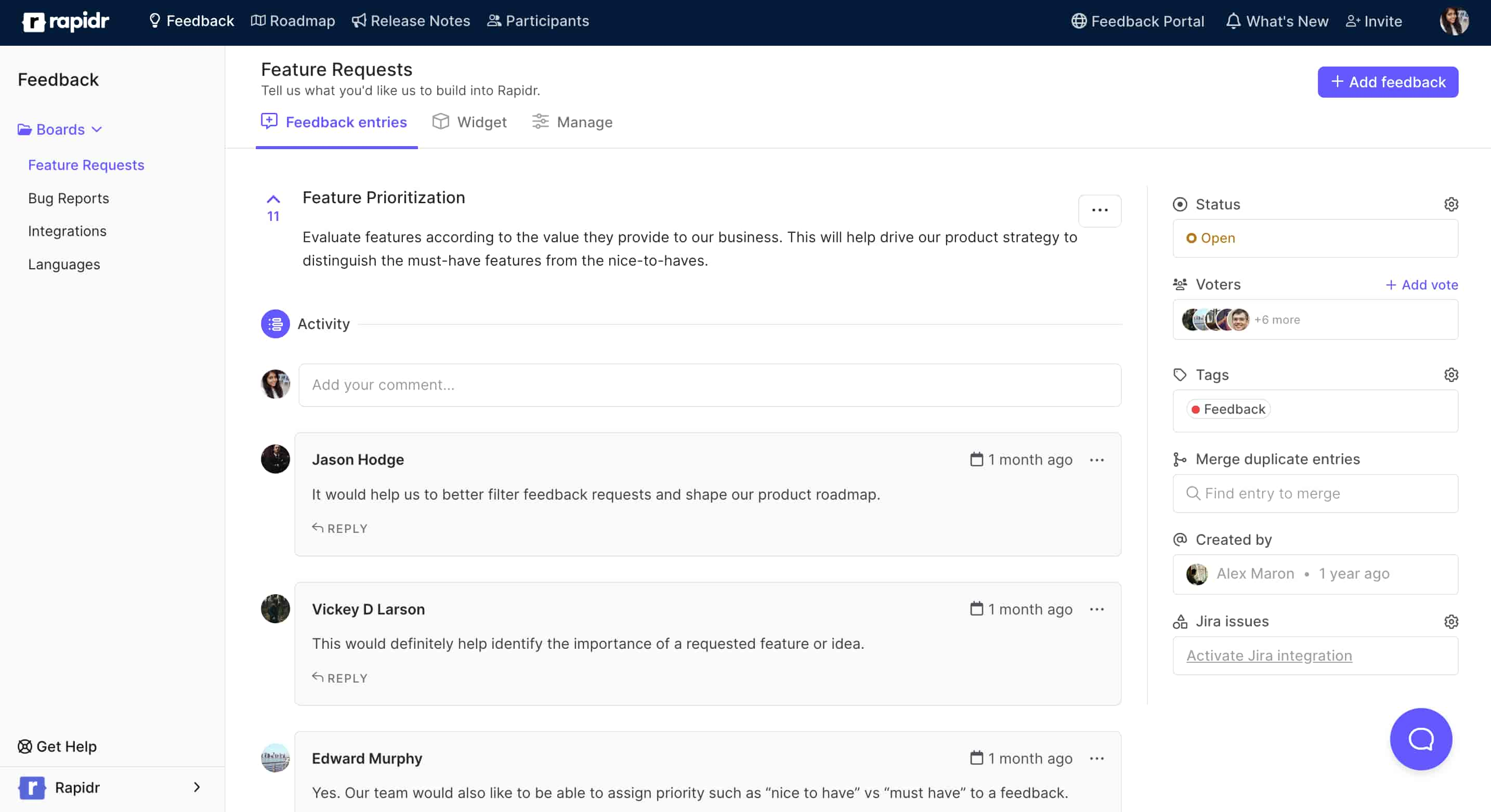
Rapidr is a product research tool that helps product teams understand what customers need by tracking feature requests and ideas, analyzing & prioritizing what to build next, creating a roadmap backed by customer insights, and communicating new features with release notes.
Understanding customers begins by collecting their feedback in a centralized app. Rapidr helps you capture product ideas, requests, and feedback from colleagues and customers with their customer feedback portal and in-app widget.
Next, for analyzing and prioritizing the roadmap based on customer insights, Rapidr helps you slice and dice feedback by customer attributes and sorting by votes.
Lastly, inform your roadmap with the most critical feedback, and let your customers know what's new with release notes.
Pricing: Starts at $49/month.
Use Case: Best for product feedback and roadmapping.
Features of Rapidr
- Rapidr is an end-to-end product research and feedback solution, so you don't have to glue multiple apps together to close the feedback loop. By choosing Rapidr, you get feedback collection, roadmap software, and release notes software – all in one place.
- Rapidr is one of the most reasonable and cost-effective solutions that offer excellent value for money stacked against the other enterprise options on this list. Rapidr's pricing is based on the weight you derive from the software instead of per-seat pricing.
- Rapidr's hosted feedback portal and widgets are lightweight, easy to use, and customizable, fitting perfectly with your existing workflows and brand design.
- Rapidr's customer portal gives your users a persistent place to come and leave their ideas and requests. You can create multiple feature voting boards for every use-case or product vertical.
- Rapidr can be fully white-labeled on high-end plans. White-labeling removes the "Powered by Rapidr" link from your feedback portal and emails, which means no visible branding from Rapidr.
- Rapidr is relatively new in the market. But with all the necessary features at a reasonable pricing plan and in the hands of trusted people, it's an excellent option for anyone looking for a lean, simple, clean product feedback alternative. They track feedback on their public feedback board.
Reviewers say that compared to Pendo, Rapidr is:
The good parts:
- End-to-end feedback-focused solution
- Cost-effective and affordable. Plans start from $49/mo.
- Modern and lightweight interface.
- Easy to use.
- Brilliant Customer Support.
- Quick to set up and run.
The bad parts:
- SOC2 is not available.
Rapidr has changed the way we collect and manage feedback from our users. It helped us create a single entry point for all feedback requests across our product and avoid using huge spreadsheets and slack channels. It also helps keep our users and teammates in the loop as we make decisions for the product. - Daniel Wolken (Founder)
2. Zendesk
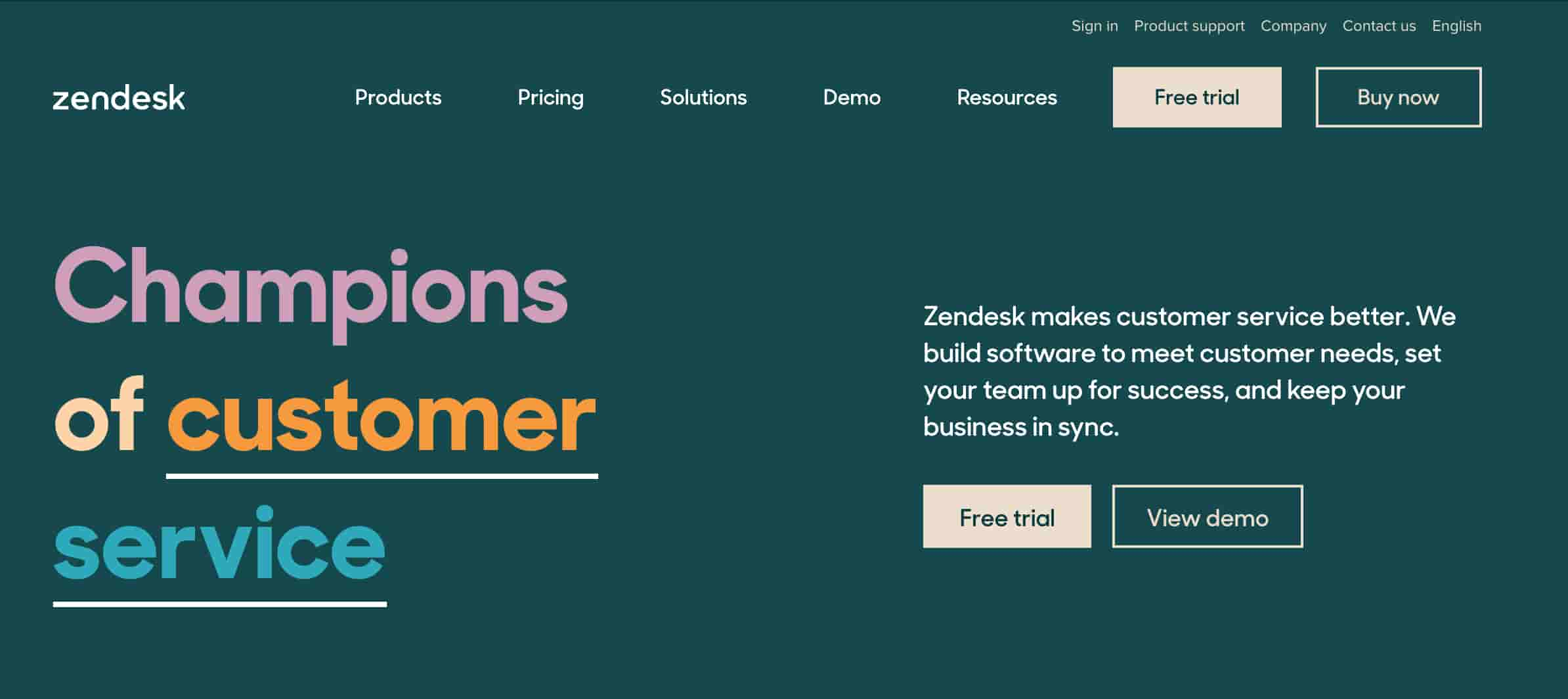
Zendesk is a service-first CRM company that builds support, sales, and customer engagement software to foster better customer relationships. Zendesk improves customer service, closes the loop by meeting customer needs, and sets teams up for success.
Use Case: Best for VoC tool, customer support
Features of Zendesk
- Zendesk enables companies to handle and respond to client inquiries effortlessly through several channels such as email, chat, telephone, or social media.
- It helps analyze customer feedback with multiple integrations and functionalities, and it is completely customizable.
- The platform is straightforward and doesn't have too much of a learning curve.
3. Hotjar
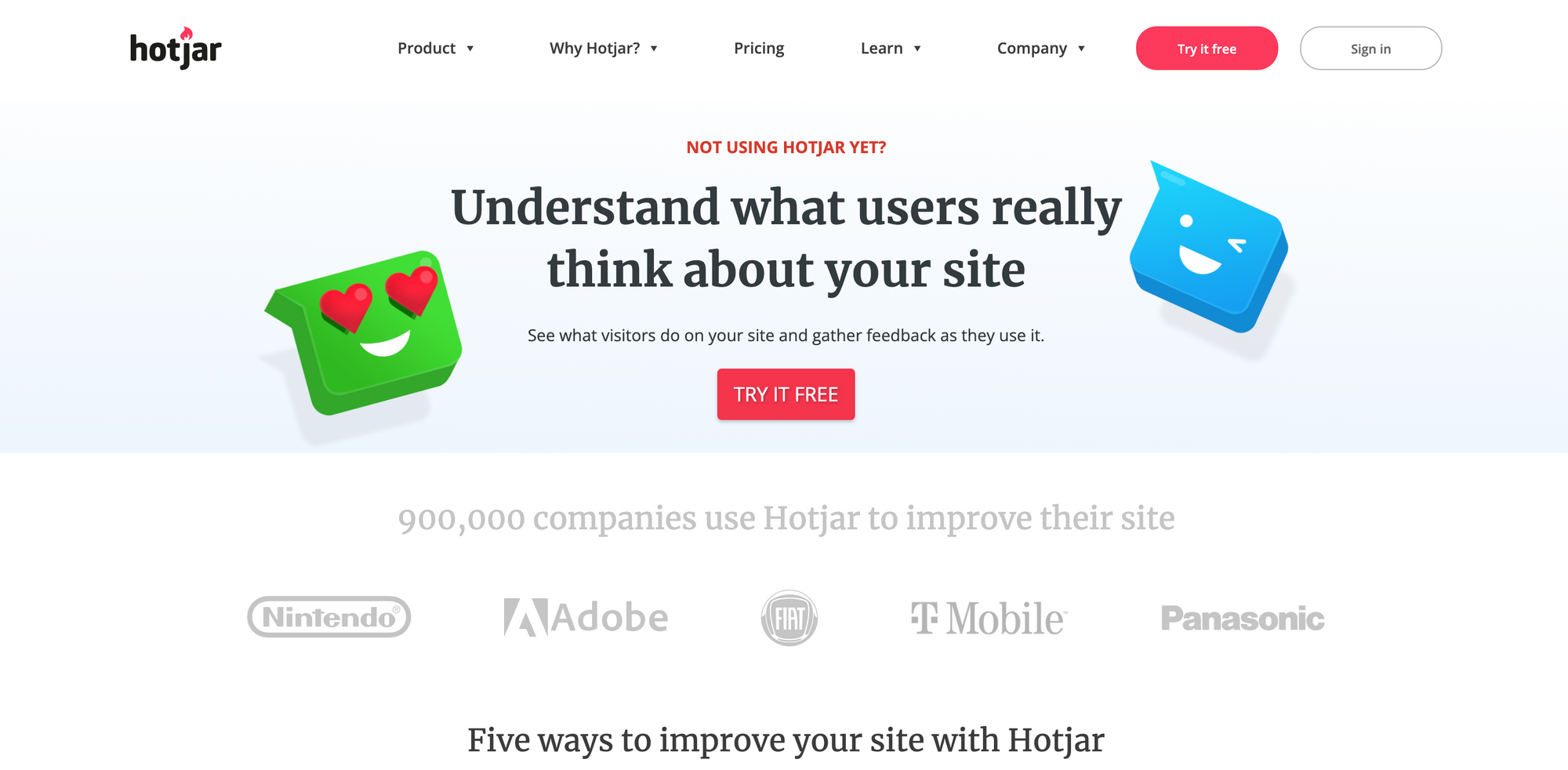
Hotjar is an analytics tool for page view and user session recordings. It offers analysis and feedback, including heatmaps, form analytics, and visitor recording. With these analysis tools, companies can monitor and measure user behavior. In addition, Hotjar provides visual representations of website visitors and their usage behavior.
Pricing: Starts at $39/month.
Use Cases: Best for user behavior visualizations and tracking, website feedback.
Features of Hotjar
- Hotjar helps you track customer journeys on your website to improve your customers' onsite experiences and engagements. Hotjar gives its data as visual representations called heatmaps.
- They add a tab or widget on your website where users can click to leave comments. This gives people a way out if they face problems and provide feedback.
- Hotjar's key selling point is packing analysis and feedback in one platform. Understanding your users enables you to ask for their feedback instead of doing guesswork directly.
4. Productboard

Productboard is a project management tool that captures problems, feedback, and user research, organizes feature ideas, plans releases, and shares beautiful interactive roadmaps. It consolidates ideas from customers into a prioritized roadmap based on data.
Pricing: Starts at $39/month per teammate
Use Case: Best for project management and roadmapping.
Features of Productboard
- Productboard is a project management tool that combines a user feedback voting board and inbox with prioritization methods and roadmaps.
- Key features include collecting product feedback from email, prioritizing features with a set of frameworks, various product roadmap templates, etc.
- Many integrations such as Slack, Zapier, and Salesforce are supported to manage projects and customer feedback.
- Productboard is a complex project management tool, much less a feature-tracking tool or roadmapping tool. No doubt, it's great, consisting of all the customizations, but configuring the right setting for managing user feedback feels like a chore.
- It is expensive. At the time of writing, prices start from $20 a month for one admin and five contributors with limited admin rights and restricted features compared to other product roadmapping tools.
5. SurveyMonkey

SurveyMonkey is an all-in-one survey tool that helps run customer satisfaction surveys(CSAT) and NPS to get product feedback and ask customer feedback questions to users. It also supports employee engagement surveys to understand employee satisfaction within the company.
Pricing: Starting from $25/month
Use Case: Best for online surveys and customer insights
Pros of SurveyMonkey
- It is user-friendly and has an easy-to-use interface for creating and sending feedback surveys.
- It provides a wide range of survey customization options, like the ability to collect data from many respondents, integrate with other tools, etc.
- SurveyMonkey offers advanced reporting and data analysis capabilities as well.
- Limited customization options for some of the survey templates. It doesn't support product roadmaps and changelog functionality like Rapidr.
6. UserTesting
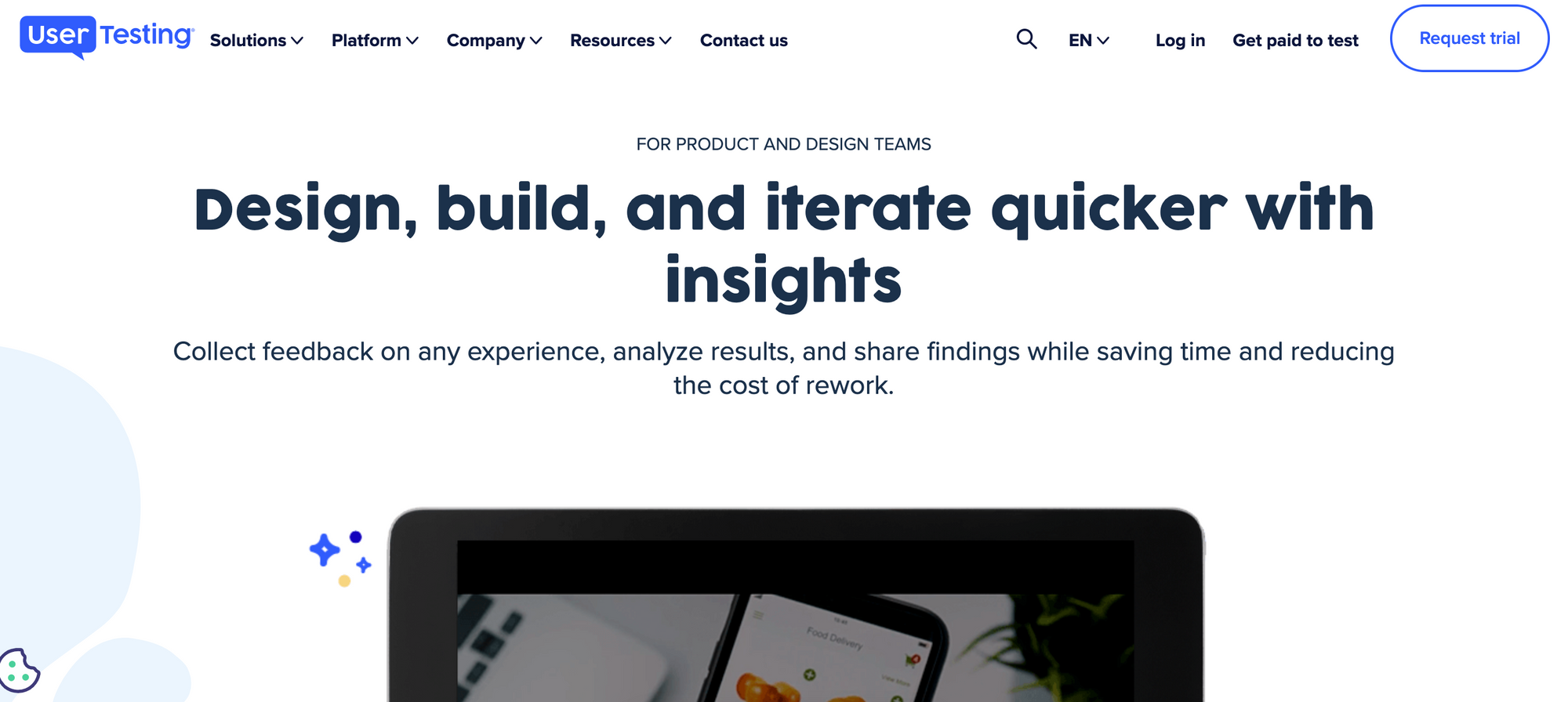
UserTesting enables companies to see, hear, and talk to their customers as they engage with products, apps, and messaging. It helps make companies more informed decisions based on different types of customer feedback.
7. Dovetail
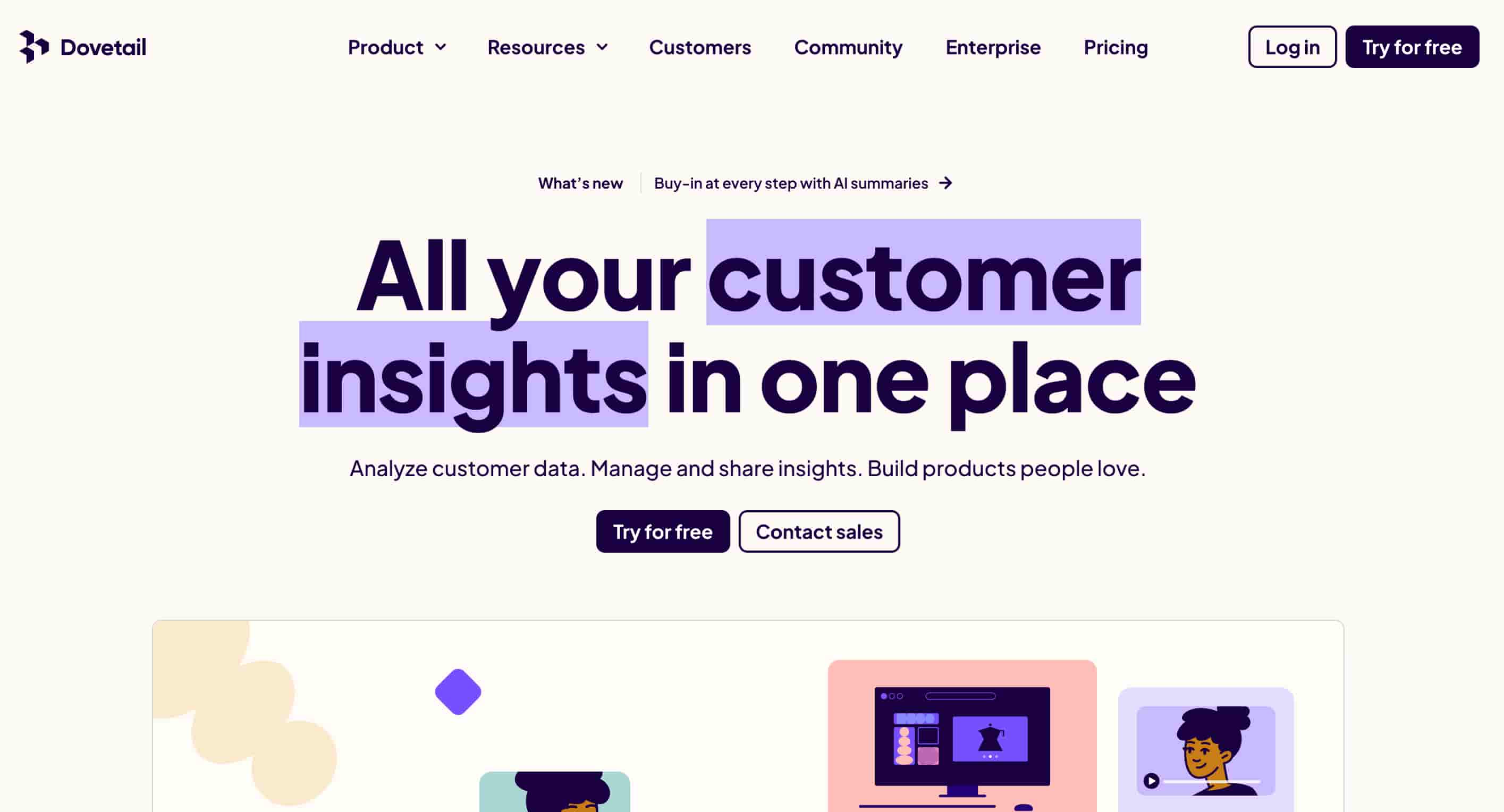
Dovetail is a customer insights hub that helps uncover insights from user feedback, customer interviews, support tickets, and sales calls. Dovetail helps teams centralize, organize, analyze, and collaborate on user research data.
Pricing: Starting from $30/month
Use Case: Best for research and customer insights
Features of Dovetail
- Dovetail is used for conducting and managing qualitative research as it brings all research planning, source data, analysis, and reporting together in one place. The transcript feature by Dovetail is commendable.
- It helps make research easier to conduct with templates for different project types and track all your participants individually across as many projects as you want.
- Customers praise their product design, and product adoption is smooth with intuitive information architecture.
- However, they provide limited text formatting and layout options on insights and data pages.
8. ProductPlan
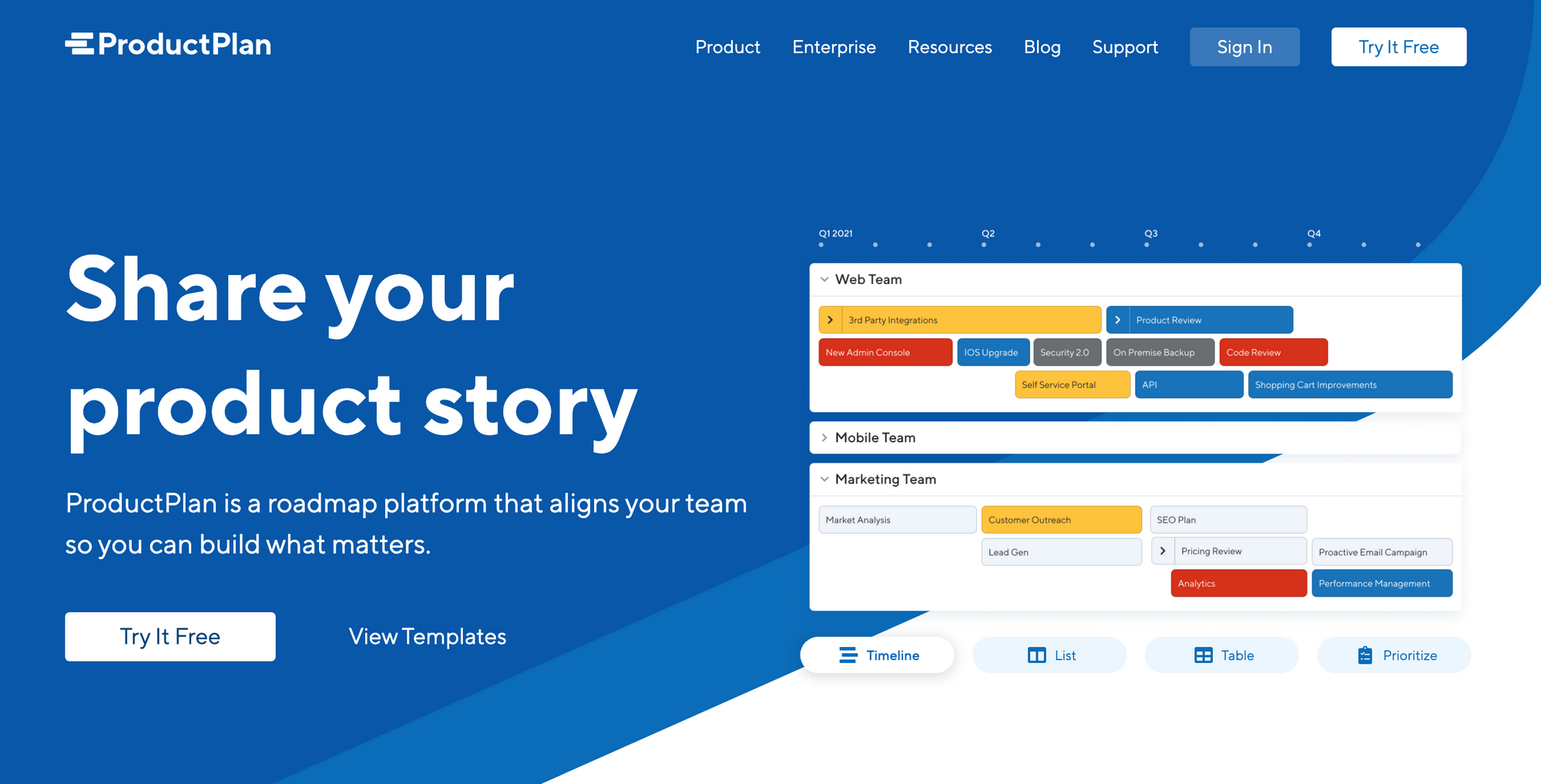
ProductPlan is a roadmapping software that helps teams plan, visualize, and share the product feedback strategy. Create beautiful, collaborative roadmaps in minutes.
Use Case: Best for product roadmapping.
Features of ProductPlan
- ProductPlan supports quickly creating and updating roadmaps with a strong level of detail - the filtering capabilities also ensure we can share relevant roadmap details with the people who need them.
- One of their customers said," ProductPlan makes all work within the company more agile and simple, allowing working time to be more valued and without setbacks."
- It helps provide all stakeholders visibility into a company's development roadmap, knowing what is currently being worked on and what is coming up in the pipeline.
- ProductPlan is a product management software first, not developed for product research, lacks product feedback boards, changelogs, and custom status, and requires extra payment for features like SSO.
- It accomplishes its core goal of visualizing a product roadmap. Still, it's hard to collaborate with teams, as not everyone has a paid account, so only one or two people can update the roadmap compared to its alternatives.
9. Prodpad
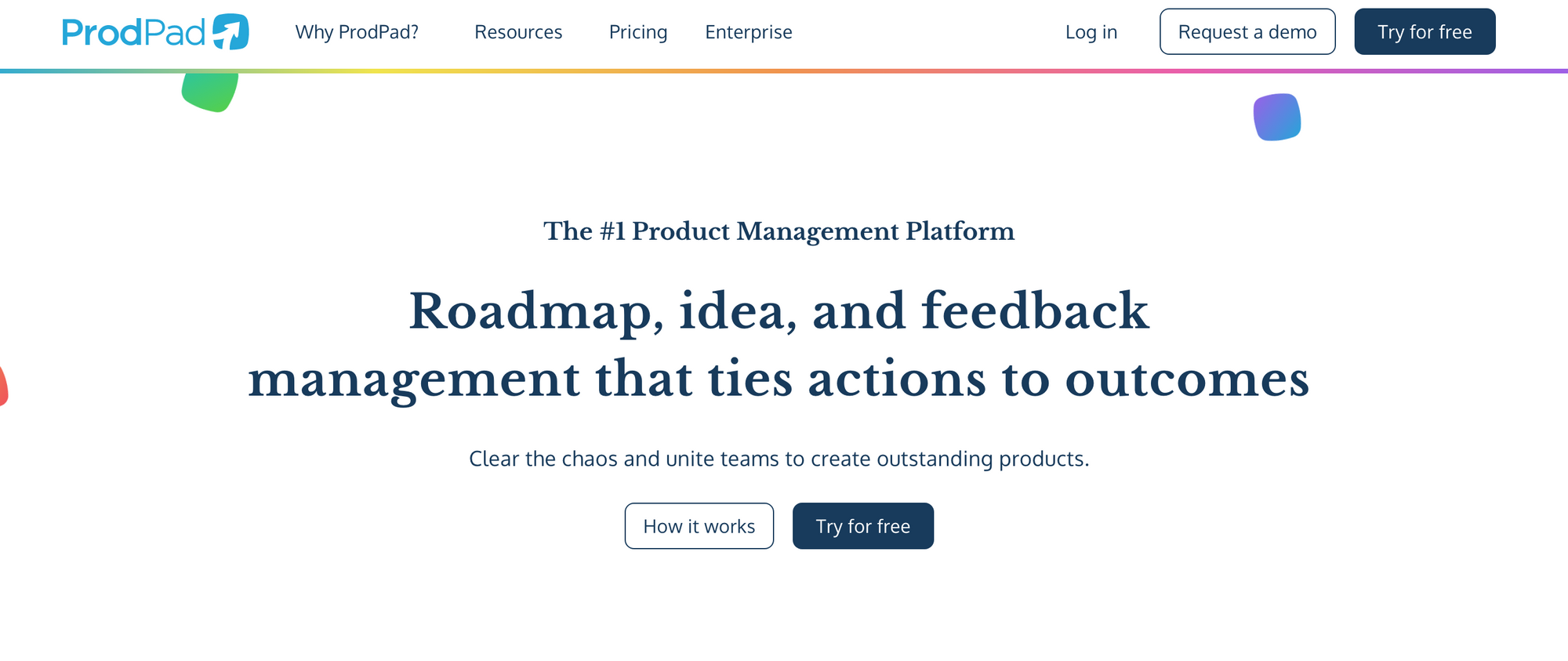
Prodpad is a product feedback and road-mapping tool where product teams can share feedback about the product, and upvote features with a feature voting board. It helps create a neatly structured roadmap for multiple products with a timeline view that showcases the updated announcements of a particular product.
Pricing: Prodpad charges $24 per module per editor. If you want to use all roadmaps, ideas, and feedback modules, it totals $72 per month for an editor.
Use case: Best for product feedback and roadmapping.
Features of Prodpad
- ProdPad helps customers to visualize, collaborate, and easily maintain their roadmaps in one place, replacing spreadsheets.
- It also allows users to create multiple ideas and feedback that can be later used based on priorities. Users love the visualization charts inside the tool, which help teams prioritize projects better.
- ProdPad has a steep learning curve and can be overwhelming for new users compared to Prodpad alternatives.
- Their pricing model seems different as they don't charge per individual seat but on bundles of seats that work out to $72 per user.
Tips to Conduct an Effective Product Research
Effective product research is essential for understanding market needs, identifying opportunities, and mitigating risks associated with launching or enhancing a product. Here are some tips to ensure your product research is both comprehensive and efficient:
- Set Clear Objectives: Before starting, define what you hope to achieve with your research. Understanding user needs, identifying market gaps, validating a product concept, and having a clear goal will guide your research methods and tools.
- Choose the Right Research Methods: Different methods might be more suitable depending on your objectives. Surveys, interviews, focus groups, usability tests, and competitive analysis are commonly used.
- Diversify Data Sources: Utilize qualitative (e.g., user interviews, feedback portals, focus groups) and quantitative (e.g., surveys, analytics) methods. This ensures a balanced view and mitigates the limitations of any single method.
- Know Your Target Audience: Ensure you're collecting insights from a representative sample of your target market. Segmenting your audience can also yield more specific insights.
- Create Effective Surveys: If using surveys, ensure questions are clear, unbiased, and structured in a way that encourages honest and comprehensive responses.
- Listen Actively in Interviews: Listen more than you speak during user interviews or focus groups. Avoid leading questions and allow participants to share their genuine thoughts and feelings.
- Prototype Early: Before investing heavily in product development, create prototypes or minimum viable products (MVPs) to test your concepts and gather real-world feedback.
- Stay Updated on Market Trends: Regularly monitor industry news, competitor updates, and market trends. This will help you anticipate changes and adapt accordingly.
- Analyze and Synthesize: Collecting data is just the beginning. Analyze the feedback and results to identify patterns, correlations, and actionable insights. Tools like affinity diagrams or journey mapping can help synthesize findings.
- Iterate and Test Again: Product research isn't a one-time activity. As you make changes based on research, continue testing and iterating based on new insights.
- Document Everything: Keep detailed records of your research processes, findings, and subsequent decisions. This not only provides a reference but also helps in comparing results over time.
- Use Technology and Tools: Leverage product research tools and platforms to streamline data collection, analysis, and collaboration.
- Involve Cross-functional Teams: Engage teams beyond product management, such as marketing, sales, and engineering, in the research process. Different perspectives can yield richer insights and foster a holistic product strategy.
By adhering to these tips, product teams can enhance their research effectiveness, leading to more informed decisions, better products, and improved chances of market success.
Rapidr: Best Product Research Tool for Product Managers
Product research tools are indispensable for product managers in this competitive market landscape. Armed with many features, they allow for a nuanced approach to product development, offering insights that can elevate a product from being merely good to truly exceptional.
While many product research tools help you capture, organize, and prioritize customer feedback and ideas, you should consider the one that enables you to uncover the insights from the feedback without jumping through hoops.
Rapidr helps SaaS companies be more customer-centric by consolidating feedback across different apps, prioritizing requests, having a discourse with customers, and closing the feedback loop. Other notable features include collecting feedback via widgets, slicing and dicing feedback, embedding a roadmap into your product, and closing the feedback loop.
Managing your feedback on a robust product research tool like Rapidr will help you to:
- Consolidate all your research into one organized place.
- Collect, manage, and prioritize product feature requests without any guesswork.
- Listen to and automatically inform customers about progress to help retain and grow the customer base.
- Product research is a team sport. Include your teammates without paying extra.
- Maintain a public roadmap to inform all stakeholders.
- Changelog to keep your customers updated on new features or product releases.
Rapidr offers an easy way to collect feedback and perform product research, prioritize, track, manage research feedback, and engage users at a competitive price. Sign up and start improving your product research process.

